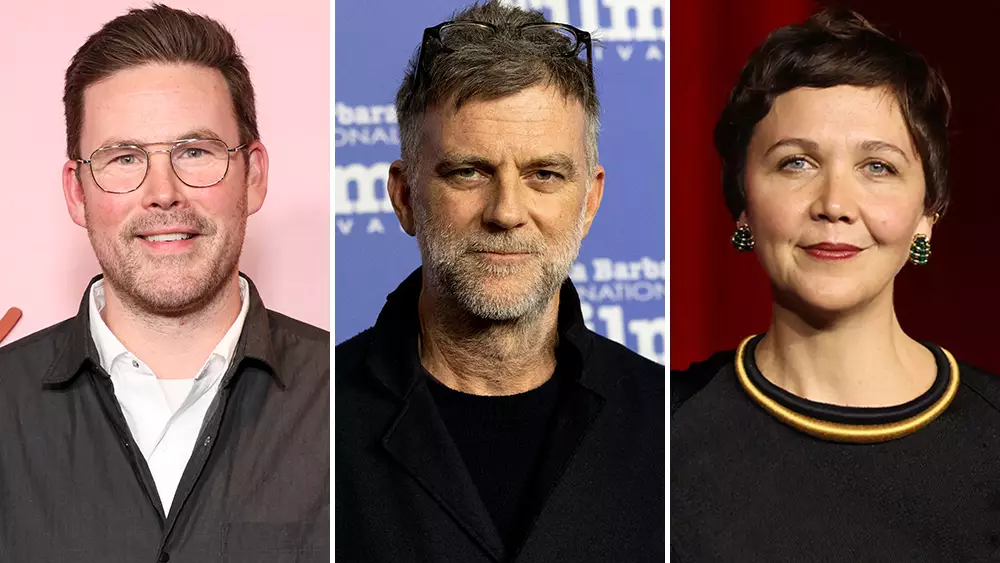Warner Bros. has unveiled a series of calculated release date adjustments leading up to CinemaCon, which could be pivotal in steering the studio towards profitability this year. Amid a landscape where only a handful of auteur-driven films have raked in over $100 million, the pressure on Warner’s distribution team, under the leadership of Jeff Goldstein, is palpable. The studio’s recent strategies not only reshape its calendar but also signify a shift in recognition of market trends and audience preferences. In such a volatile environment, wise scheduling could be the difference between a hit and a flop.
One of the most notable changes includes the much-anticipated genre film, *Weapons*, directed by Zach Cregger, moving from its initial January 2026 slot to August 8, 2025. This move brings it closer to the height of the moviegoing season, setting it up against Disney’s *Freakier Friday*. While one might question the wisdom of scheduling a genre film against a family-oriented sequel, it reflects Warner Bros.’ confidence in its product and an understanding of market dynamics. The decision to utilize Imax screenings is also strategic; the film’s commercial viability benefits from this engagement with premium cinema, providing it an edge in captivating audiences.
Impressive Line-Up and the Art of Timing
In a year that boasts significant financial stakes, the adjustments serve not only to alleviate scheduling congestion but also to capitalize on prime release windows. Paul Thomas Anderson’s latest endeavor, titled *One Battle After Another*, has a staggered release date now set for September 26, 2025. The cost of this film reportedly hovers around $140 million, making it essential for Warner Bros. to maximize its box office potential by choosing its release window carefully. Historical patterns show that PT Anderson’s films can thrive off festival buzz, yet the absence of a confirmed festival premiere for this release raises some eyebrows.
What’s intriguing is how Warner is maneuvering the competition. By moving *Gyllenhaal’s The Bride!* to March 6, 2026, Warner Bros. positions it right before other major tentpoles, including Legendary/Warner Bros.’ own *Dune Part Two*. This is a bold alignment, allowing them to ride the coattails of earlier successes while showcasing their heavy-hitters back-to-back, potentially maximizing audience turnout.
Given the release landscape, there are lessons to be gleaned from the juxtaposition of high-profile films. The balance of ambition and realism in their release calendar indicates that Warner Bros. aims to dominate the box office scene through strategic scheduling, rather than merely riding the waves of cinematic trends.
Maximizing Potential Through Utilization of Imax and Alternative Formats
One cannot ignore the emphasis Warner Bros. has placed on booking Imax screens and experimenting with less conventional formats like 70mm and Vista Vision. The potential for *One Battle After Another* to screen in such premium formats underscores the studio’s inclination towards not just traditional box office success but towards enhancing the cinematic experience—suggesting a vision that appeals to both cinephiles and casual viewers alike.
This approach is reminiscent of the tactics employed by other major studios, which have relied on premium viewing experiences to boost ticket sales. If done right, this could yield impressive returns and elevate the user experience, even beyond the typical blockbuster soundtrack and visual spectacle.
The Challenges of Competition and Market Saturation
Despite Warner Bros.’ strategic pivots, the question of market saturation remains looming. The film industry today is congested with sequels, remakes, and high-concept blockbusters vying for the same audience’s attention. How Warner Bros. navigates its 2025 landscape against rivals will be critical. With the highly anticipated *Flowervale Street* taking aim at a summer release date, one wonders if it can grab audience attention while standing out in a high-stakes environment filled with blockbuster films.
Moreover, the juxtaposition with major family features like *The Cat in the Hat* employing top voice talents raises concerns about the ever-critical family audience. Even with a stellar voice cast, competing with juggernaut franchises can be daunting, especially when audiences show fatigue towards cinematic offerings.
In dissecting Warner Bros.’ release strategy and industry positioning ahead of major events like CinemaCon, the risks are apparent, but so too are the opportunities. By honing in on premium viewing experiences, leveraging festival circuits, and executing strategic release date adjustments, the studio manifests a desire to solidify its footing in a competitive market. As the dynamics of cinema landscape evolve, it will be fascinating to observe how Warner Bros. continues to adapt—and whether these strategic changes yield the transformative benefits they’re banking on.

